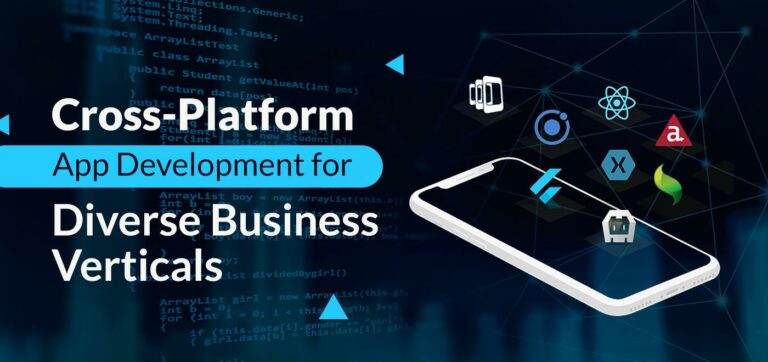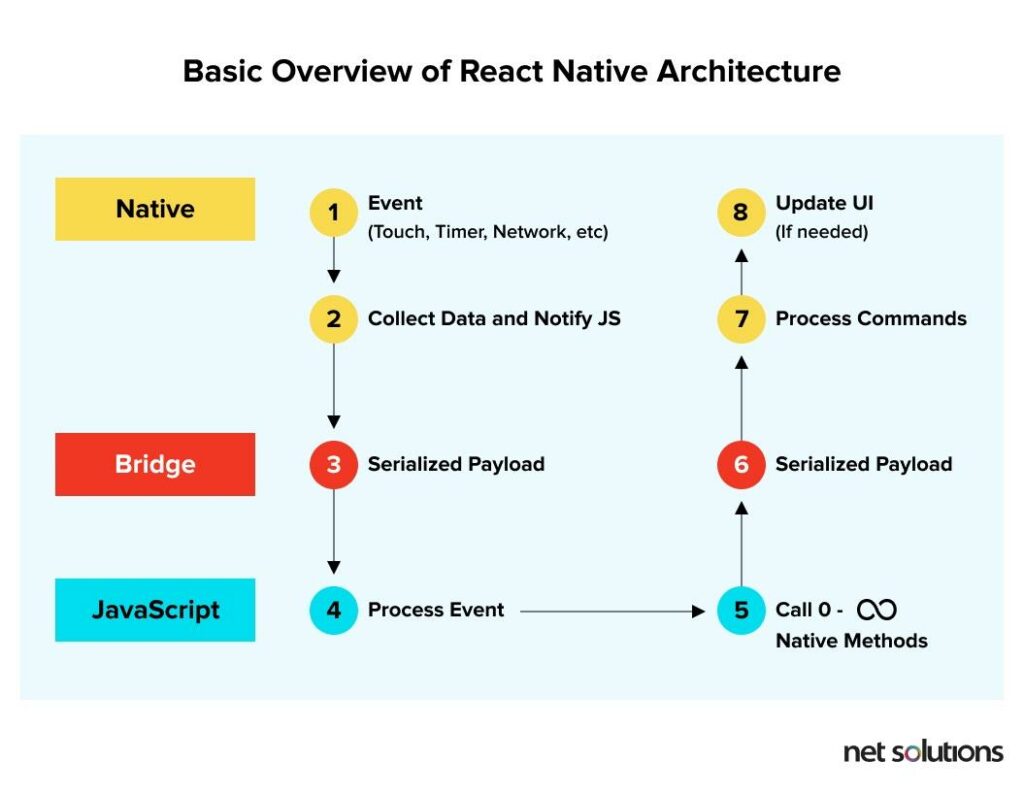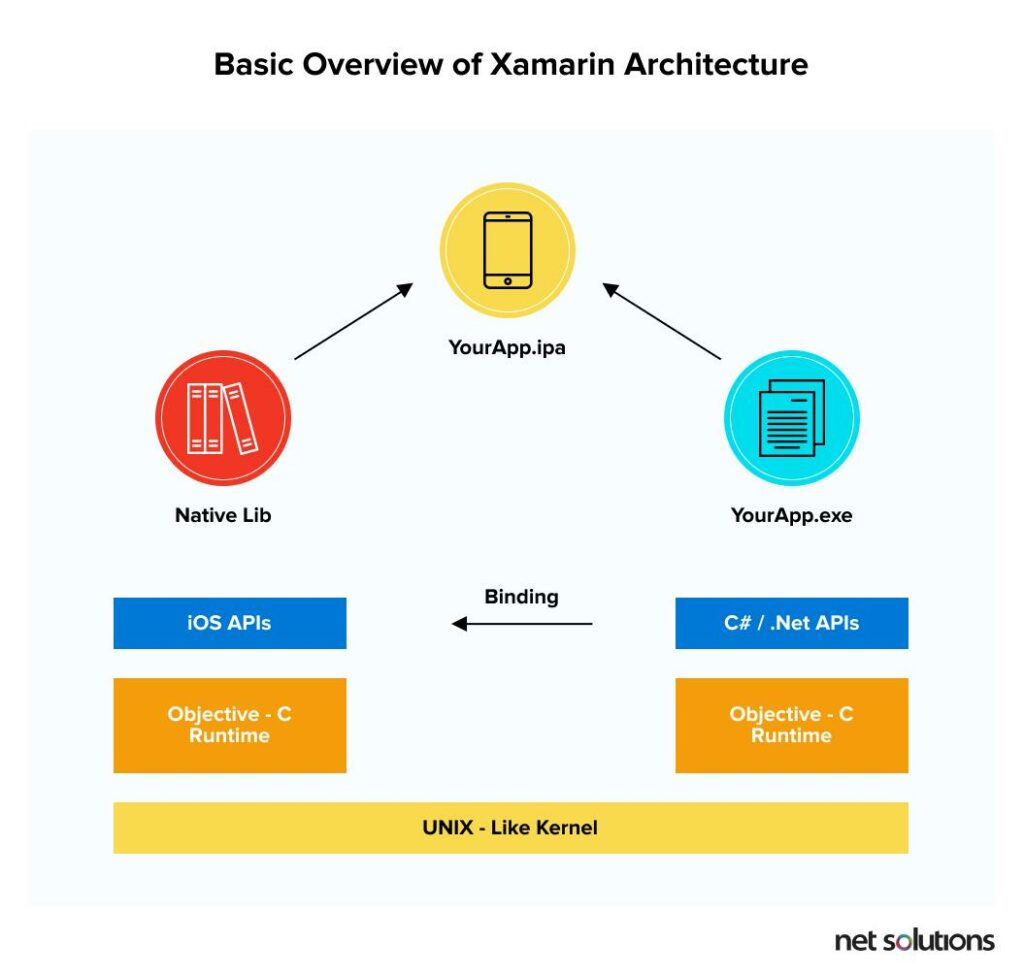Today’s technology advancement is assisting in better development and delivery of quality solutions. Cross-platform development is an advanced method for developing quality and extensive mobile apps. Since the use of smartphones has increased rapidly with time and people are relying more on them for their everyday needs, developing apps that work on almost all devices render a great opportunity for businesses.
Mobile application is amongst technological advancement that helps in shaping our daily lives. They are a reliable and constant source for user entertainment and information that cannot be ignored. Mobile apps allow better and more convenient access to the world hence their development is a crucial aspect to talk about.
In this article, we will understand how cross-platform app development solutions can assist in the scalability of diverse business verticals and better individual lives.
Defining Cross-Platform Applications
A single code of mobile application that runs seamlessly on different platforms or devices, like Android, iOS, and Windows is cross-platform development. The advanced tech stack lets mobile app developers develop unique code and deploy it, reducing the time to develop for different devices. The benefit of Cross-platform app development is it can reduce costs and save time without impacting the quality.
Programming languages like Dart (Flutter) and frameworks like React Native and Xamarin support developers to create a scalable and robust cross-platform mobile app. Flutter lets developers add advanced features, including –
- 2D rendering engine
- Ready-made widgets
- React-style frameworks
- Development tools
We will discuss these applications in detail later but first, let’s understand the reason why you should pick cross-platform over the native platform or which among the two are better for app development.
Difference Between Native and Cross-Platform
The most debatable topic is the difference between native and cross-platform and which is a better choice for mobile app development services. Many companies prefer using Native app development for better user interface and experience, while many have moved to cross-platform. One of the biggest known examples of cross-platform is Uber.
Native app development is complex to work on, and only the expert can use native languages to develop a sustainable product. With native, developers can focus deeply on design and craft intuitively as per the platform.
Cross-platform frameworks, on the other hand, limit the designers due to the wide range of devices that needs to be covered through the app.
The below table shows the difference between cross-platform and native apps, which makes it easy for you to choose for your business.
Benefits of Using Cross-Platform for App Development
Cross-platform is a perfect choice to increase the time to market while maintaining the budget. Other than this, other benefits are –
Minimum Development Cost – The perfect blend of reusable codes and agile app development is possible with cross-app development. The amalgamation of processes and tools also reduces the cost of development as it is based on the concept to write and run anywhere, cost-effectively improving the business.
Agile Development Process – Since the app developer only has to develop a single source code for multiple platforms, this method can certainly reduce the development efforts just by 50%-80%. This agility in the development process also lets the developer create a feature-rich app in less time.
Reusable Code – The third benefit of using cross-platform development is code reusability. Instead of developing code for every platform, the developer can leverage it by using the same code repeatedly, eliminating the time and resources to be engaged for native codes.
Easier Management & Deployment – A cross-platform development is a single source code that is compatible with mostly all platforms. This kind of development makes it easy for the businesses to maintain & deploy the code changes, update the features quickly and swiftly deter bugs from the codebase giving a seamless experience to the users.
Maximized Exposure – Since companies prefer this method to deliver robust mobile app development services because the code can be deployed on various platforms, including the web. Cross-platform development gives the maximum time for companies to target their audience and reduce time to market.
Uniform Design – A cross-platform designer recognizes the need for a uniform design for all platforms hence, try to craft a sophisticated and simple user interface using interesting and captivating UI elements that helps in building a uniform user experience for users to enjoy.
Easy Integration with Cloud – Cross-platform mobile apps are easily compatible with third-party plugins and software. A single source code can be coordinated with cloud settings and other extensions to enhance the app’s scalability and functionality.
Let’s move further and understand which popular technology and frameworks are used for robust cross-platform app development. We will discuss the 5 most popular cross-platform frameworks to develop intuitive and state-of-the-art.
Cross Platform Framework For Captivating and Functional Applications
Flutter
Flutter has become one of the best frameworks because it is free and open-source. The framework has been ranked amongst the 3 most loved frameworks as it delivers high performance and excellent quality.
Flutter is one of the most loved and powerful frameworks with simple UI. Flutter uses Dart programming language and a plethora of widgets to support gesture and animation. Flutter’s portable GPU allows developers to build the latest interfaces, and a fast development process helps in the quick launch of a minimum viable product. Flutter has a hot reload feature that lets developers easily modify the app in the backend without the need for saving the file. A few popular examples of Flutter app development solutions are – Alibaba, Google, Google Ads, and Tencent.
React Native
Source: Net Solutions
Following Flutter, React Native is a leading framework preferred to develop mobile, web apps. React Native is based on JavaScript that aids developers to give the native look and feel to their users. Developers can combine the best features of Javascript and ReactJS to develop a cross-platform app. Developers can leverage both platforms to use the modules of Swift, Objective – C, and Java.
React Native also offers a hot reloading feature to monitor modification seamlessly. React Native is also compatible with leading third-party plugins and lets designers create intuitive & responsive UI interfaces. A few popular examples of React native app development solutions are – Instagram, Bloomberg, Pinterest, Skype, and Tesla.
Phone Gap
PhoneGap is used when developers want to create applications smoothly and hassle-free. PhoneGap gives developers the flexibility to develop a multilingual application without hardware restrictions.
Like the other two, PhoneGap is also an open-source framework that offers cloud-based mobile app solutions. Cordova is another name for PhoneGap for developing complex native features that are compatible with Windows, iOS, Android, and Electron platforms.
PhoneGap renders a faster development process with a vast collection of UI libraries and a large community base that are proficient in HTML, CSS, Objective-C, C#, C++, and JavaScript to develop native features like accelerometer, contacts, camera, geolocation with minimal differences on diverse platforms.
Ionic
Another sophisticated and exceptional open-source framework with a UI toolkit that leverages developers to create high-performance progressive web apps, mobile, and desktop apps. The framework uses CSS, JavaScript, HTML, and AngularJS. Iconic apps run in a special shell and use Cordova wrappers for native elements to make captivating designs, slick animations, and all components required to make the application stand out in the crowd.
The ionic framework uses diverse plugins that make feature development easy and change code structure as per requirement.
Xamarin
Source: Net Solutions
Last in the list but not least, Xamarin is an independent app development framework. Xamarin is an open-source cross-platform framework that uses C# and .Net libraries so that developers can use 90% of the code again for diverse platforms.
Xamarin allows easy native library linking for smooth customization, monitors run-time errors, compile-time checking, and eliminates hardware compatibility issues while delivering the capability to deliver native-like functionality. A few popular examples of Xamarin app development solutions are – Fox Sports, Alaska Airlines, HCL, American Cancer Society, and BBC Good Food.
Future Trends of Cross-Platform App Development
With multiple frameworks supporting developers to develop a cross-platform application that works seamlessly on all platforms with captivating designs and exceptional features and functionality. Businesses can use cross-platform for brighter and futuristic app development that will help scale their business. Check out these trends that will surely rule the industry and help businesses stay competitive no matter their niche.
Beacon Technology
Beacon technology is known to everyone to detect the user’s proximity. This technology has been adopted by the users for sending personalized messages and promotional offers securely. Many industries have benefited from the technology. Cross-platform development can support the technology allowing businesses to enhance customer experience and expedite business.
Augmented and Virtual Reality
AR/VR has become a promising and powerful technology that has set trends in the development of robust, creative, and innovative software. The power of AR and VR can be seen in entertainment, media, games, online shopping/commerce, & more. Cross-platform app frameworks can support businesses to develop apps integrated with AR/VR technologies ensuring a great user experience.
Wearable Technology
Wearable technology is one of the most used technologies globally today. Smartwatches, fitness trackers, body sensors, and smart glasses are the most preferred wearables and will be continually adapted.
Smart wearables offer seamless connectivity with smartphones enabling users to stay updated without handling them consistently.
Tracking features in wearables have helped a lot of people to stay fit and monitor their health closely. Looking at the endless opportunity of integrating wearable technology in the business, organizations are investing more and more in the same. Cross-platform app solutions can leverage businesses to stay competitive and develop an app that complies with wearable technology.
Chatbot
Backed by Artificial Intelligence, Chatbot is not new to anyone. Chatbot interaction with the users helps businesses with the time to better understand their users while offering a seamless and better user experience. The 24X7 customer service is only possible due to this technology hence, banking and IT sectors were more drawn towards this. However, other industries such as hospitality, travel, & more have integrated the technology to help customers more and solve their queries at any time of the day.
Cross-platform app development assists businesses to develop an intuitive and robust chatbot that can better customer engagement and reach.
To Conclude –
Cross-platform apps are becoming popular due to versatility and flexibility in the development of an application for diverse industries and fulfill unique needs. The technology supports all platforms – Android, iOS, web, and progressive apps that can be compatible with any device.
Security, innovation, creativity, minimized resources, time, and money are a few factors supported by the cross-platform development method. In order to have a cross-platform app developed for your business, you can always connect with a reliable enterprise software development solution provider.
Author’s Bio: Scarlett works with the editorial team of A3logics, a leading company offering learning content management system. Exploring the latest technologies, reading about them, and writing her views have always been her passion. She seeks new opportunities to express her opinions, explore technological advancements, and document the details. You can always find her enjoying books or articles about varied topics or jotting down her ideas in a notebook.




0 Comments